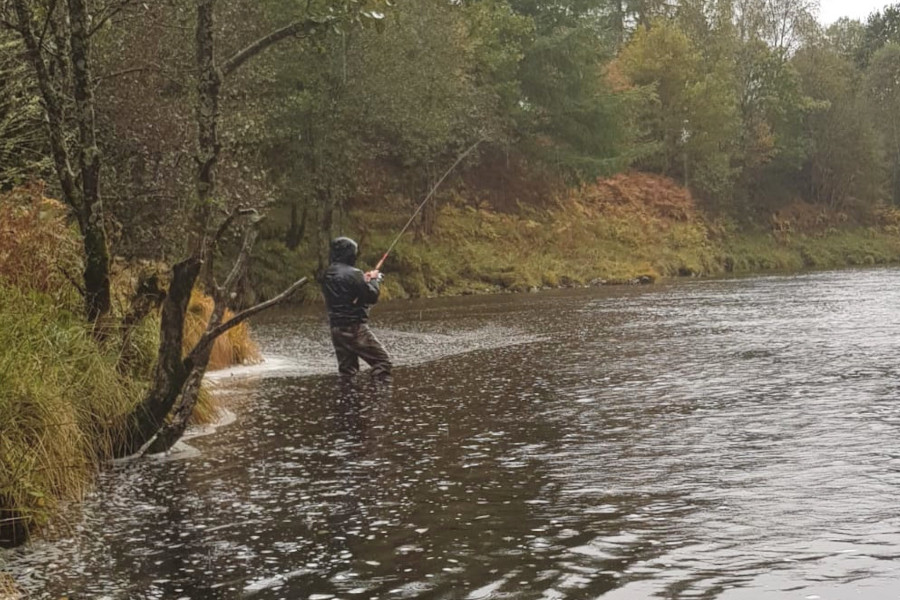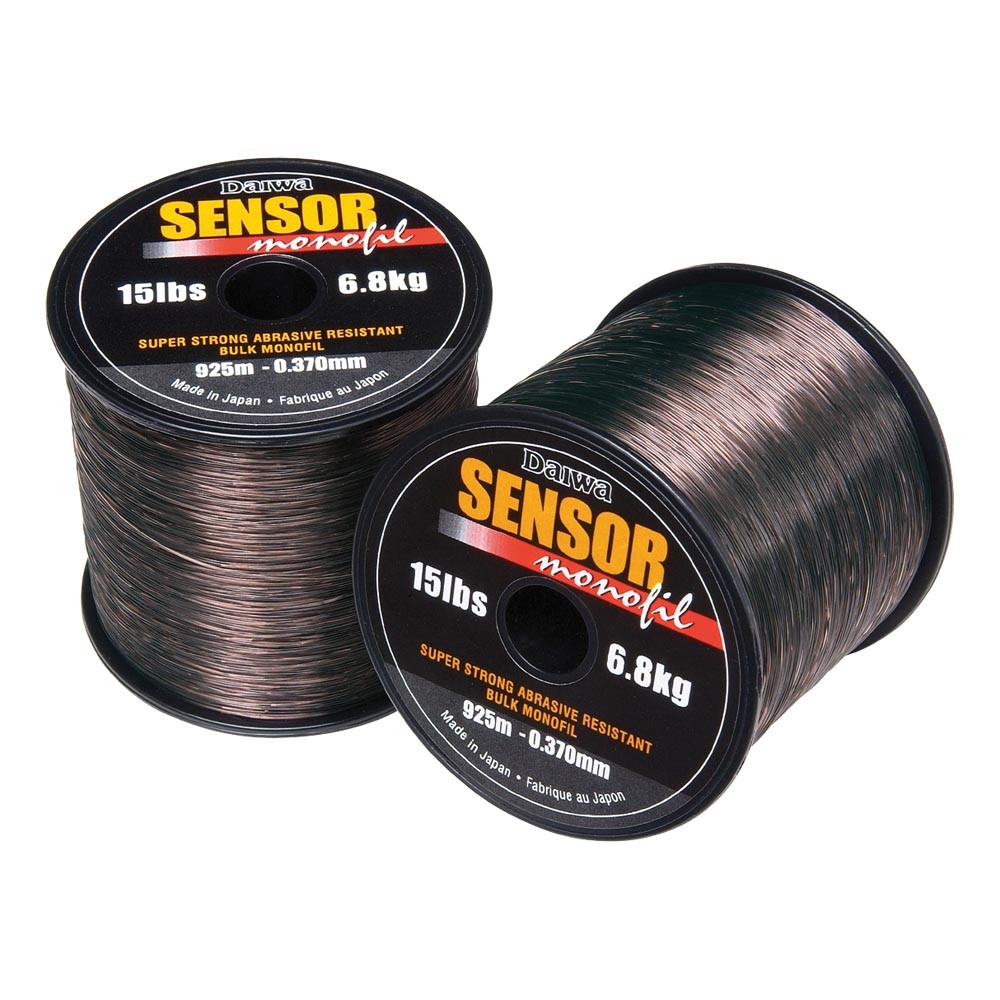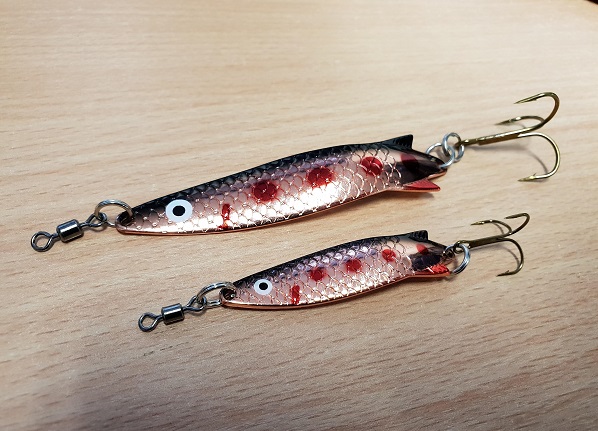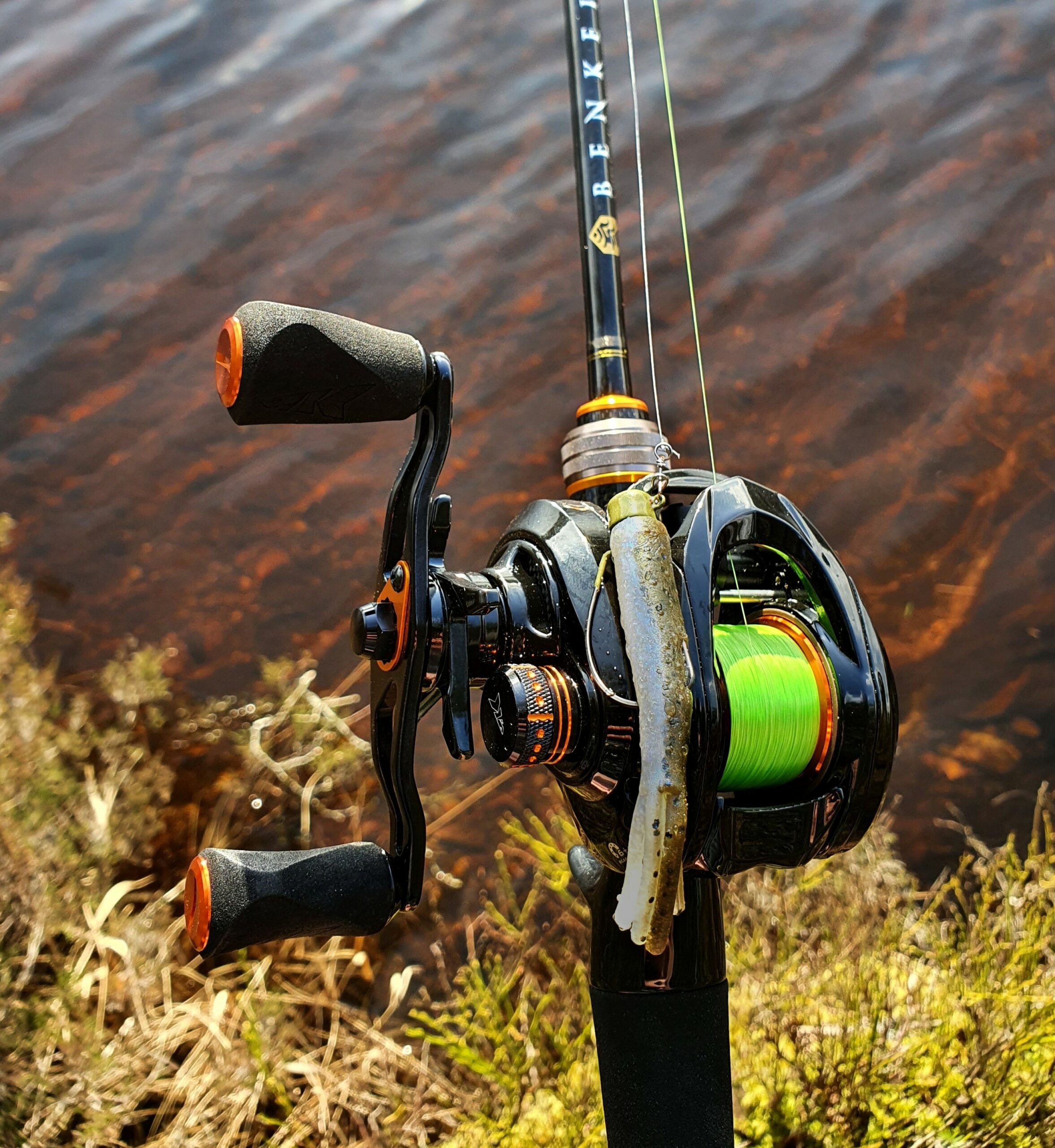Spinning for salmon is probably the most commonly used salmon fishing method in the UK. Unlike fly fishing, which requires a lot of patience, timing and skill to perfect a well presented fly accurately on the water, spinning is a much easier method to learn. However, don’t let it’s quick learning curve dismiss it’s fish catching ability, just like fly fishing, presenting a lure in the right place at the right time is just as vital as it is fishing the fly.
If anything, spinning will allow you to fish more effectively and quicker. In this article, we will be breaking down the fishing tackle required for spinning as well as how to fish a lure effectively through a pool.
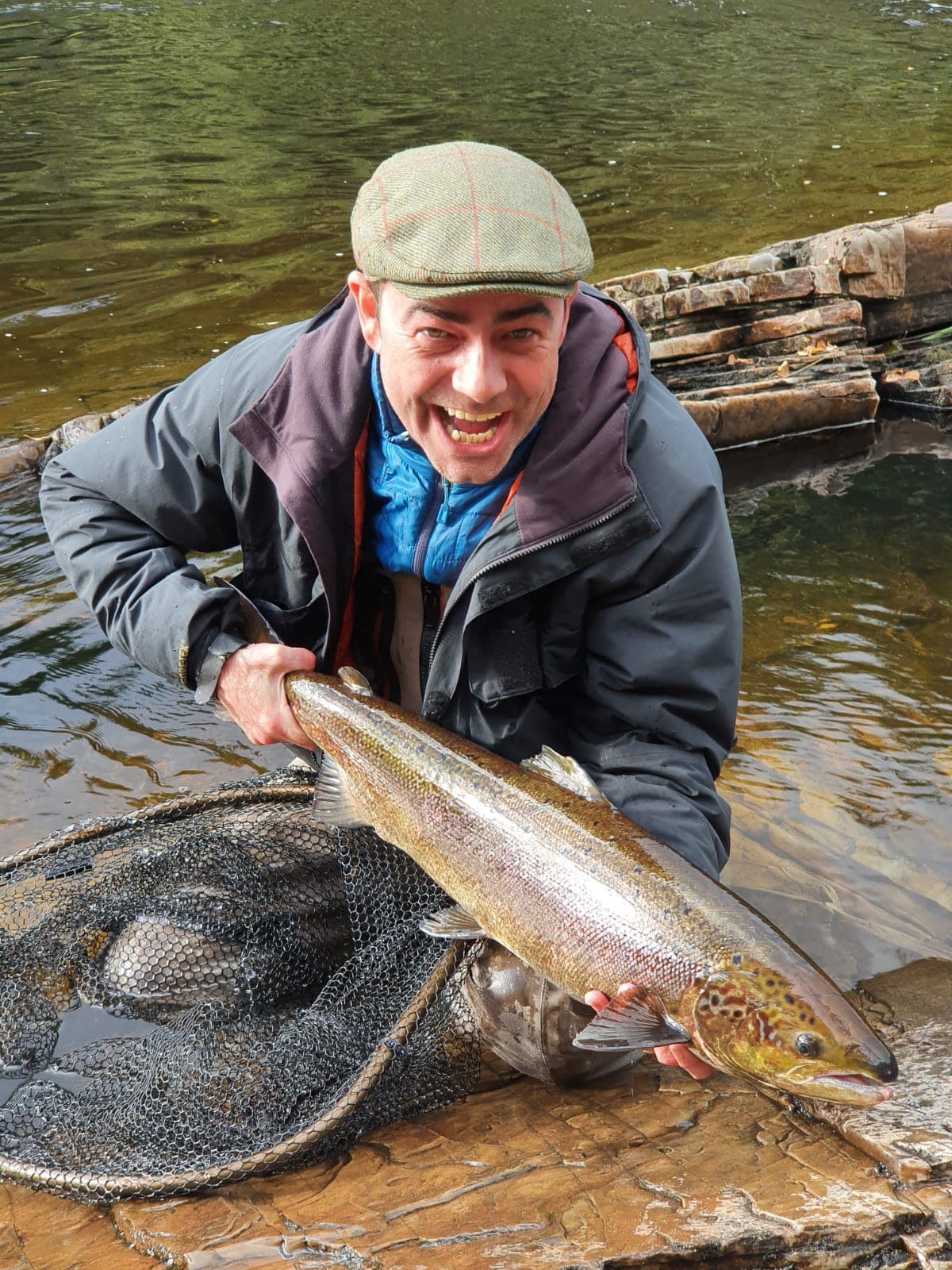
Fishing Tackle
Like any fishing tackle, a well balanced outfit will not only optimise your casting performance but will provide you with the confidence to fish.
Spinning Rod
When it comes to spinning rods, there is a multitude of choice out there for the avid lure angler, so where do you begin? First off, we need to establish the rivers that you will be fishing, are they big or small? Are they deep? Fast flowing?
Answering these questions, will help decide on the perfect tool for the job.
So how do you decide? Well, follow our guidelines below to help you make a decision.

If you’re fishing a large, deep and heavy flowing river, like the river Tay for example, you want a longer rod, with a fast action. The longer rod will provide you the length to make long and accurate casts but also allow you to pick up the line quickly if you have to strike at distance. The fast action provides you with a rod that can help increase casting distance as the blank recovers a lot quicker and it also provides you with a rod that has plenty of backbone to bully fish in harder flowing water.
If you were to use a shorter rod with a more progressive/softer action, you would find the rod would be under-gunned. The shorter rod would limit your casting distance and the more progressive action would feel like you were not in control during the fight.
Don’t dismiss shorter rods though, shorter rods come into their own on smaller river systems. They provide better casting accuracy and are easier managed if some pools are overgrown with vegetation and manoeuvrability is limited.
In regards to rod length for larger rivers, we would recommend rods in the 10’ to 11’ length and rods for smaller rivers, we would opt for a between 8-9’ in length.
So now, we have a better understanding of the rod length that we require, what about the rod action that we touched upon earlier. The rod’s action is determined by how far the rod bends over from the tip eye. You can check out more on rod actions here.
We would opt for a moderate fast to fast action rod depending on the mainline that you decide to use. We will touch on this later in the article.
The other variable you have to consider is the casting weight of the rod. The most common casting weight of a salmon spinning rod is between 10-50 grams. The casting weight determines the rod’s lure weight casting capabilities. In this case, lures from 10-50 grams will be fine to cast on our example.
The casting weight should be determined by the weight of the lures that you are looking to fish.
Click here to view our full range of spinning rods.
Fishing Reel
Speak to any seasoned salmon angler and they will probably highlight the Shimano baitrunner as the go-to spinning reel for salmon. This information was accurate and valuable back in the 90’s when quality and reliable spinning reels that could hold up to the rigours of salmon fishing were not readily available.
However, with the advances in reel technology, this is far from accurate in modern times. Modern front drag spinning reels offer increased drag pressures, higher gear ratios and lighter body materials to name just a few advances.
All these changes have been scrutinised by reel manufacturers to help aid performance, comfort and confidence in anglers. The iconic baitrunner is now an outdated and heavyweight alternative that only has its place in the bait fishing/ledgering world of fishing of which it was originally designed for.

The size of the fishing reel will be determined by the rod that you choose and the rivers that you fish. You want to ensure that the reel is balanced with your spinning rod that you’re using to ensure you optimise the full potential of the spinning rod outfit.
To ensure that you have chosen the correct reel for the job, here are some general tips, to keep you right.
A 10-11’ spinning rod, opt for a 4000 size spinning reel.
A 8-9’ spinning rod, opt for a 3000 size spinning reel.
Click here to view our full range of spinning reels.
Mainline
There are many choices of mainlines on the market. The most common two are monofilament and braid, both of which have their pros and cons. We believe choosing a mainline is a personal choice. Anglers have their own preference when it comes to how a line handles and feels, especially how they react whilst under tension.
For us, we like a braided mainline for all of our lure fishing needs. The benefits outweigh the cons. Braid has a better diameter to breaking strain ratio, meaning that you can still fish with a heavy breaking strain line whilst still maintaining a low line diameter which will aid in cutting through the water and reducing line drag. This coupled with the low stretch properties of a braided mainline means that you are always in contact with your lure.
The lack of stretch also transmits every bump or bite down the line, meaning you can feel the subtlest of takes and also provide positive hook holds during the strike.
High visibility braided lines give you visual indication of slack line takes (when the fish takes the lure but is moving towards the bank that you are fishing from) and will reduce the possibilities of deep hooking fish.
This can be overlooked using a monofilament line as the colour of mono is usually of a neutral colour and is hard to see in any light conditions. The only downside to braid is its low stretch properties when playing any sort of salmonid species, the lack of stretch means there is no room for error during the fight. Since braid is not forgiving as monofilament, inexperienced anglers may find the odd lost fish.
Monofilament provides a more forgiving line and can absorb those close quarter lunges that we all cringe at due to the increased chances of a hook pull. Monofilament can also behave slightly better on the spool. Newcomers can experience wind knots, if spools are overfilled and the line is not managed by hand during and after the cast.
Monofilament has better abrasion resistance, which can be beneficial whilst fishing around rocks and ribble.
Click here to view our full range of braid & mono.
How to fish a pool effectively
If you fish a pool efficiently, you can walk away knowing that you have covered every inch of water. The most effective way to do this, is to visualise the pool broken up in a grid like pattern. Then starting from the left or right hand side, start casting in a fan like motion. Start off with short casts, covering the water in front of you in the margins and gradually work around in the fan shape.
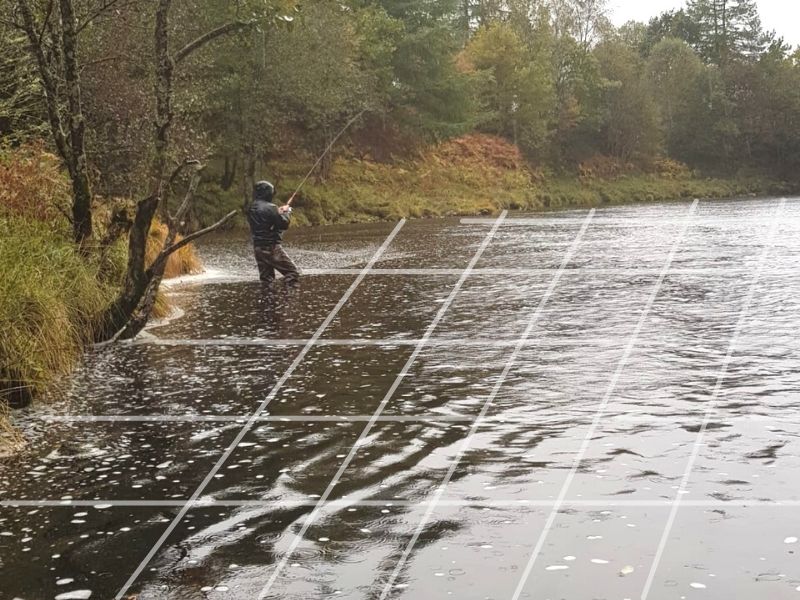
Once this is completed, cast slightly further out and continue the process again until you have completed the furthest casts possible. Depending on the flow and depth of the pool, ensure you cover various depths by counting down the lure. Ask bailiffs for depths, they are a plethora of knowledge and this will also reduce the chances of you snagging and losing lures too. Heavier lures will sink deeper faster, allowing you to get your lure down in deep pools while lighter lures will fish near the surface allowing you to effectively cover shallow water runs.
Click here to view our full range of lures and spinners.
Rod angle
One thing we have seen in the past, is anglers that cast out and keep the rod at the one angle whilst retrieving the lure. This usually results in the line sitting to a 90 degree angle from the rod tip at the end of the retrieve.
In doing so will reduce your chances of not only hooking up due to the angle but also lost fish.
Think about it, when a fish hits your lure, this is transmitted directly down the line. If the rod is angled, the take has to transmit through the rod tip before you are made aware of the take. That delay is enough time for a fish to hit a lure and then spit it out before you have a chance to react. Not only that, the power from a vertical strike from a 90 degree angle is dampened significantly as the rod has to travel a fair distance to pick the line.
When retrieving a lure in flowing water, your rod tip should be pointing in the direction of your lure. Following the lure with the current will ensure you have direct contact with the lure at all times. Any takes will be transmitted directly down the line to the spool providing better bite detection, no matter what line you are using.
Features
Like any form of fishing, you want to ensure your targeting fish holding features. Salmon will lie in slower water areas to rest on their journey up the river especially after tackling energy sapping obstacles like waterfalls or fast flowing stretches. Targeting these areas will be the key to your success.
These features also provide sanctuary from predators from above and below the waterline.
Below, we list a few likely fish holding areas and how to target them.
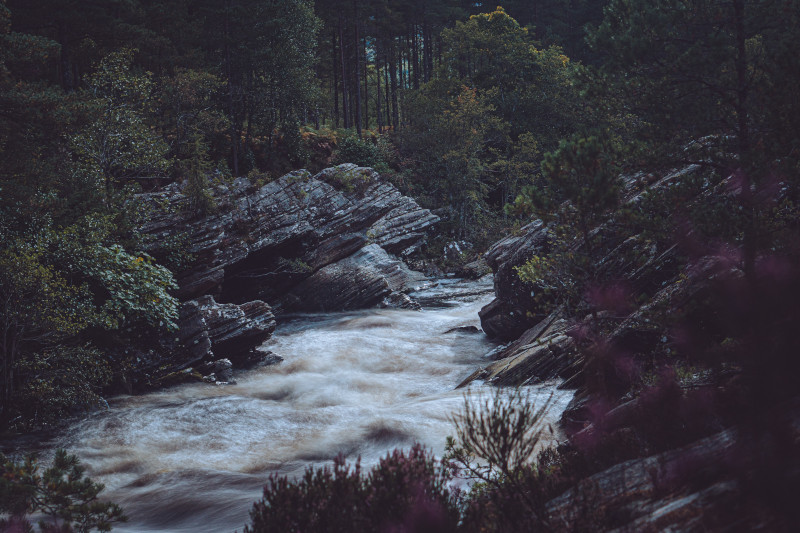
Rocks/Boulders
These features displace flowing water and create a small bed of calm water directly behind the boulder. Look to target the sides of the boulder in the slightly faster flowing water to encourage fish to push out from behind the lie. Once hooked up, apply solid pressure initially to try and pull the salmon away from the boulder to eliminate the chances of losing the fish.
Sunken Trees
Sunken trees can slow and break down the flow of water as well as provide cover from predators. Try and cast as close to these as possible and work the full length or width of the structure to ensure you cover all possible areas fish may be lying in.
Pool Tails
The tail of the pool generally sees salmon resting after battling up tough obstacles, such as waterfalls or rapids. These areas are great for targeting, work the width of the pool tail.
Margins
One of the best features for any fish species. The margins on rivers offer an array of features from cut away under banks to steep drop offs. There is usually one side of a river that will have the advantage of a deeper gully or slower moving water that can provide the perfect salmon lay.
Conclusion
Hopefully after reading this article, you will have a better understanding of; the tackle required for spinning for salmon and how to target fish holding features. Following our guidelines will ensure you have a well balanced outfit that will help you tackle the king of the river.
If you are looking for salmon lure recommendations, make sure you check out our “Best Salmon Lures” article, here.

